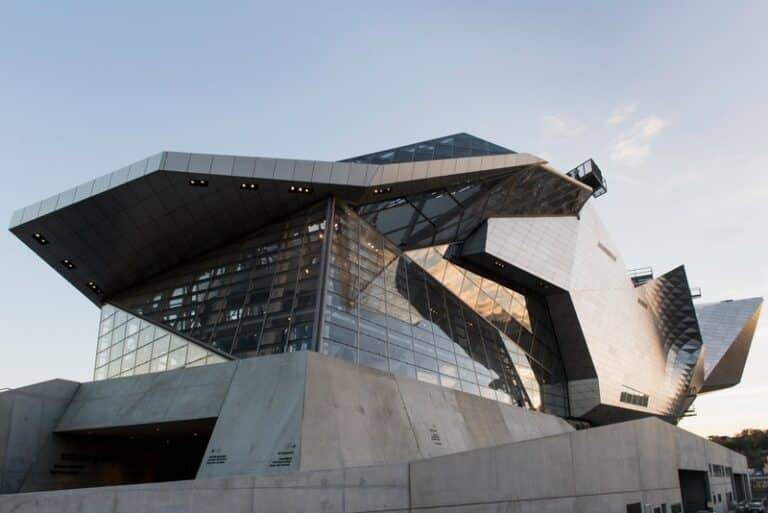A Journey Through Architectural Generations: From Craft to Code
Architecture has always been a mirror of its time, reflecting society’s values, aspirations, and technological progress. From the ornate cathedrals of the 19th century to the smart cities of the 21st, the evolution of architects—their tools, education, and societal roles offers a fascinating narrative of human ingenuity. This article delves into the distinct characteristics of architects across generations, from the 1800s to the future, analyzing the shifting paradigms and their implications.
Architects of the 19th Century (1800-1900): The Masters of Craft
Social Standing and Education
In the 19th century, architects were often revered as societal elites. This was an era when architecture was deeply tied to craftsmanship and artistic expression. Architects such as John Ruskin and Charles Barry emerged as cultural icons, blending classical influences with Gothic revival styles. Education was primarily apprenticeship-based, with budding architects learning directly under the tutelage of master builders and designers.
Tools and Techniques
The tools of the trade were rudimentary yet effective. Architects relied on hand-drawn plans, wooden models, and extensive knowledge of geometry. The Industrial Revolution introduced new materials like cast iron and steel, revolutionizing construction techniques. Landmarks such as the Crystal Palace in London and the Eiffel Tower in Paris symbolized this era of bold experimentation and engineering feats.
Societal Influence
Architects were instrumental in shaping urban landscapes. Cities expanded with grand boulevards, ornate theaters, and imposing government buildings. However, the profession was largely exclusive to men, with women rarely afforded opportunities in the field.
Architects of the 20th Century (1900-1999): Innovators and Revolutionaries
Early 20th Century: The Modernist Surge
The early 1900s saw a radical departure from ornate styles to modernism, driven by architects like Le Corbusier and Frank Lloyd Wright. Their designs emphasized functionality, simplicity, and the use of modern materials such as reinforced concrete and glass. Educational institutions like the Bauhaus in Germany became pioneering hubs, merging art, technology, and design.
Mid to Late 20th Century: Technological Integration
By the mid-century, architects embraced advanced technologies. Computer-aided design (CAD) emerged in the 1980s, replacing hand-drawn blueprints and enabling more precise and complex structures. Postmodernism challenged modernist dogma, reintroducing ornamentation and historical references into architecture. Icons like Zaha Hadid and Renzo Piano exemplified this shift.
Societal Role
Architects of this era became global celebrities. Skyscrapers dominated cityscapes, reflecting economic ambitions. Yet, issues like urban sprawl and environmental degradation highlighted the unintended consequences of rapid urbanization. The role of architects expanded to include advocacy for sustainable development.
Architects of the 21st Century: Digital Pioneers
The 2000s: The Digital Revolution
The dawn of the 21st century marked the digital age in architecture. Tools like Building Information Modeling (BIM) transformed the design process, allowing architects to simulate and optimize structures virtually. Parametric design tools like Rhino and Grasshopper enabled the creation of complex geometries previously unimaginable.
The 2010s: Sustainable Design
As climate change became a pressing concern, architects increasingly focused on green building practices. The integration of renewable energy systems, recycled materials, and passive design strategies became mainstream. Projects like Singapore’s Marina Bay Sands showcased the fusion of sustainability with iconic aesthetics.
The 2020s: Resilience and Smart Cities
The COVID-19 pandemic underscored the importance of adaptable and resilient architecture. Remote work accelerated the adoption of cloud-based collaboration tools, while smart cities integrated IoT (Internet of Things) technologies to optimize urban living. The line between architecture and technology blurred further, with AI-driven design tools gaining traction.
The Architects of the Future: Visionaries of Tomorrow
The Role of AI and Automation
The architects of the future will likely collaborate with AI to co-create designs. Algorithms will generate solutions based on data, while architects will focus on creative and ethical aspects. Robotic construction and 3D printing will become commonplace, reducing costs and construction times.
Education and Collaboration
Future architects will require interdisciplinary education, blending architecture with computer science, environmental studies, and sociology. Collaboration across generations will be critical. Millennials and Gen Z architects will bring digital fluency, while seasoned professionals offer wisdom and experience.
Challenges and Opportunities
However, the profession faces challenges. The commodification of design by AI might devalue human creativity. Balancing technological reliance with cultural authenticity will be crucial. Architects must also navigate ethical dilemmas, ensuring equitable access to innovations.
Intergenerational Collaboration: Bridging the Gap
The Synergy Between Millennials and Gen Z
Millennials, having witnessed the transition from analog to digital, bring a unique perspective to projects. They value sustainability and community-centric designs. Meanwhile, Gen Z, digital natives, excel in leveraging cutting-edge tools and advocating for inclusivity.
Strengths and Weaknesses
While millennials bring depth and holistic thinking, they may resist rapid technological adoption. Conversely, Gen Z’s embrace of technology might overshadow the importance of cultural context. Effective collaboration can harness their strengths while mitigating weaknesses.
Conclusion: The Endless Evolution of Architecture
Architecture’s journey from the handcrafted masterpieces of the 19th century to the algorithm-driven innovations of today reflects humanity’s ceaseless pursuit of progress. As we look to the future, the profession must embrace change while honoring its roots. The next generation of architects holds the potential to redefine our built environment, crafting spaces that are not only functional and sustainable but also deeply human.
Explore more in-depth architectural content through our main sections:
- Competitions: Stay updated on the latest architectural competitions and opportunities from around the world.
- Events: Discover global architectural events and exhibitions to broaden your knowledge.
- News: Catch up with the latest updates and trends in the architectural industry.
- Building Materials: Dive into technical insights and data sheets on cutting-edge building materials.







